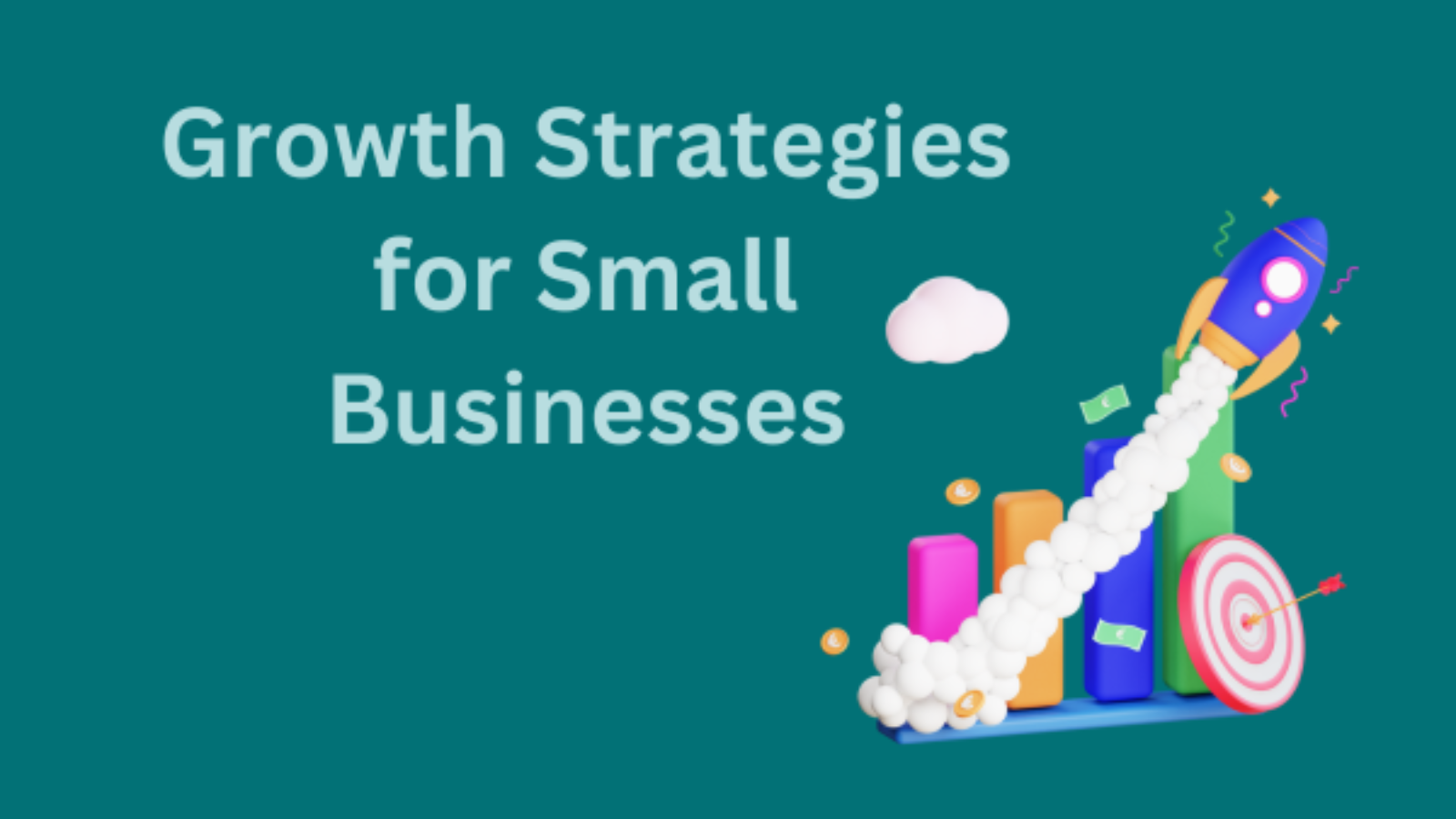In today’s competitive world, every small business dreams of growth. Yet, the path to success isn’t always easy to navigate. You might have a great product or service, but without the right strategies, scaling your business can seem like climbing a mountain with no clear trail. The good news? By following a few tried-and-true growth strategies, you can give your business the boost it needs to reach new heights.
This blog will walk you through some of the most effective growth strategies for small businesses. Whether you’re just starting or looking to scale your current operations, these tips will help guide your growth journey.
Table of Contents
1. Building a Strong Foundation for Growth Strategies
A. Define Your Business Vision and Mission
Every thriving business is built on a solid foundation that starts with a clear vision and mission. These two elements are more than just statements; they are the compass that guides your decisions and growth strategies.
Why Growth Strategies important:
- Your vision is what you aim to achieve in the long run. It’s your “why” – the purpose behind your business.
- Your mission is your “how.” Growth Strategies defines the steps you will take to reach your vision.
By setting a clear direction from the start, you ensure that every action you take aligns with your long-term goals. Think of it as creating a roadmap. Without it, you’ll be driving in circles without getting anywhere.
B. Set SMART Growth Goals

Growth doesn’t happen by accident; it requires setting the right goals. Use the SMART criteria to establish goals that are Specific, Measurable, Achievable, Relevant, and Time-sensitive. This method helps you clarify exactly what you want to achieve and how you’ll measure success.
For instance, rather than simply stating, ‘I want to attract more customers,’ a SMART goal could be: ‘I aim to grow my customer base by 25% over the next six months by implementing a referral program and improving my digital marketing strategy.”
C. Understand Your Target Market
Knowing your audience is key to driving growth. Conduct market research to understand who your customers are, their needs, and how your products or services can solve their problems. Developing buyer personas – detailed profiles of your ideal customers – helps in tailoring your marketing efforts to meet their specific preferences.
Tip: Use surveys, social media insights, and competitor analysis to gather data about your target audience.
2. Leverage Digital Marketing

A. Build a Strong Online Presence
In today’s digital-first world, having a solid online presence is essential for Growth Strategies . Your website is your virtual storefront, so ensure it’s user-friendly, mobile-optimized, and designed to convert visitors into customers.
Focus on Search Engine Optimization (SEO) to make sure your site appears in search results when potential customers look for products or services like yours. This involves using relevant keywords, creating high-quality content, and ensuring your website loads quickly and is easy to navigate.
B. Content Marketing
Content marketing revolves around delivering meaningful and insightful information that engages and resonates with your audience. It helps establish your business as an industry expert, improves your SEO rankings, and keeps potential customers engaged.
Some effective content marketing strategies include:
- Blogging (like this one!) about topics relevant to your industry.
- Creating informative videos or how-to guides.
- Hosting webinars or creating eBooks to showcase your knowledge.
Tip: Make sure your content is shareable and answers common questions that your customers might have. Google loves fresh, relevant content!
C. Email Marketing
Email marketing might seem old-fashioned, but it’s one of the most powerful tools for small business growth. By cultivating your email list, you can transform subscribers into devoted customers.
Ideas for email marketing campaigns:
- Welcome emails for new subscribers.
- Exclusive discounts or offers.
- Personalized product recommendations.
Pro Tip: Use segmentation to send tailored messages to different groups within your list, increasing the chances of engagement.
3. Focus on Customer Experience
A. Deliver Exceptional Customer Service
Your customers are your greatest asset. Treating them well can turn them into brand advocates who will recommend your business to others.
How to improve customer service:
- Respond quickly to inquiries and complaints.
- Offer personalized solutions to your customers’ problems.
- Invest in tools like live chat or a customer relationship management (CRM) system to streamline communication.
Satisfied customers are not only more likely to come back, but they’ll also spread the word about your business, giving you free and powerful word-of-mouth marketing.
B. Encourage Customer Feedback and Testimonials
Customer feedback is invaluable. Not only does it help you improve your products and services, but testimonials also serve as social proof for new customers.
Encourage satisfied customers to leave reviews on platforms like Google, Yelp, or your social media pages. You can also feature their testimonials on your website to build trust with potential customers.
Tip: Consider sending follow-up emails asking for reviews or offering a small incentive in exchange for feedback.
4. Implement Cost-Effective Sales Strategies
A. Upsell and Cross-Sell to Existing Customers

Acquiring new customers is often more expensive than retaining existing ones. By focusing on your current customers, you can increase their lifetime value through upselling (encouraging them to buy more expensive versions of your product) and cross-selling (suggesting complementary products).
Example: If a customer buys a laptop, offer them an extended warranty or accessories like a case or mouse.
B. Develop a Referral Program
Referral programs are a great way to encourage your current customers to spread the word about your business. Offer incentives, such as discounts or freebies, to customers who refer new clients.
Why it works: People trust recommendations from friends and family more than traditional advertising. By tapping into your existing customer base, you create a powerful and cost-effective growth channel.
Tip: Make it easy for customers to refer others by providing shareable referral links and promoting the program on your website and social media.
5. Strategic Partnerships and Collaborations
A. Form Partnerships with Complementary Businesses
Partnerships allow you to tap into another business’s audience, helping you expand your reach without having to build everything from scratch. Look for businesses that complement yours but aren’t direct competitors.
Example: If you run a local bakery, partnering with a coffee shop can benefit both businesses by offering combo deals that attract more customers to both establishments.
B. Leverage Affiliate Marketing
Affiliate marketing is a win-win strategy where you reward affiliates (bloggers, influencers, etc.) for driving traffic or sales to your business through their promotional efforts. This helps you reach new customers without spending upfront on advertising.
Tip: Offer attractive commissions and provide affiliates with the resources they need to succeed, such as banners, links, or promotional materials.
6. Embrace Technology and Innovation
A. Invest in Automation Tools
Automation can save you time and money by streamlining repetitive tasks, such as sending emails, managing social media, or handling customer support inquiries.
Some popular automation tools include:
- Email automation tools like Mailchimp or Constant Contact.
- Social media schedulers like Buffer or Hootsuite.
- CRM systems like HubSpot or Zoho CRM for managing customer interactions.
By automating time-consuming tasks, you free up more time to focus on strategic growth activities.
B. Utilize Data and Analytics
Understanding your business data is key to making informed decisions. Regularly track key performance indicators (KPIs) such as website traffic, conversion rates, and customer acquisition costs to understand what’s working and what isn’t.
Tools like Google Analytics and financial software like QuickBooks can help you track performance, identify trends, and make data-driven decisions that fuel growth.
7. Diversify Your Product or Service Offering
A. Expand Your Product Line
If you rely on a single product or service, your business may be vulnerable to market changes. By diversifying your offerings, you can appeal to a broader audience and increase revenue streams.
Tip: Conduct market research to identify new products or services that complement your existing ones. For example, if you run a fitness studio, you could start selling workout gear or nutritional supplements.
B. Explore New Sales Channels
Selling through multiple channels, such as e-commerce platforms like Shopify or marketplaces like Amazon, can help you reach more customers. You can also consider expanding into new geographic markets or experimenting with different distribution methods, such as offering subscription services.
8. Financial Management and Investment in Growth
A. Manage Cash Flow Efficiently
Poor cash flow management can stunt business growth. Keep track of your income and expenses, and make sure you have a healthy reserve to cover any unexpected costs that may arise.
Tip: Use accounting software like QuickBooks or FreshBooks to keep track of your cash flow, set budgets, and ensure you’re always operating with enough funds to support growth initiatives.
B. Reinvest Profits
One of the best ways to fuel business growth is by reinvesting profits into areas that will generate a return. This could mean hiring additional staff, improving your marketing efforts, or expanding your product line.
Example: If you’ve noticed a high ROI from social media ads, reinvesting in a larger advertising budget could lead to exponential growth.
Conclusion
Growing a small business is no small feat, but with the right Growth Strategies in place, it’s more than achievable. By building a strong foundation, leveraging digital marketing, focusing on customer experience, and embracing innovation, you can set your business on a path to sustainable growth.
Now, it’s your turn! Start implementing these Growth Strategies today and see the results for yourself. Whether you’re looking to increase your customer base, expand your product offering, or streamline your operations, these tips are designed to help you succeed. **Need
help with your Growth Strategies?** Contact us today for a free consultation and let’s take your business to the next level.
Ready to Grow Your Business?
Don’t leave your success to chance. At XperiaTech, we specialize in helping small businesses like yours achieve sustainable growth. Whether you’re just getting started or need help scaling, our team of experts is here to guide you every step of the way. Contact us today for a free consultation and let’s build a tailored Growth Strategies that drives results! Get in Touch Now
By following the tips outlined here, you’ll be well on your way to achieving long-term success for your small business. Remember, growth doesn’t happen overnight – but with persistence, the right strategies, and a little bit of help, you’ll be reaching your business goals in no time!

